What is a blind flange?
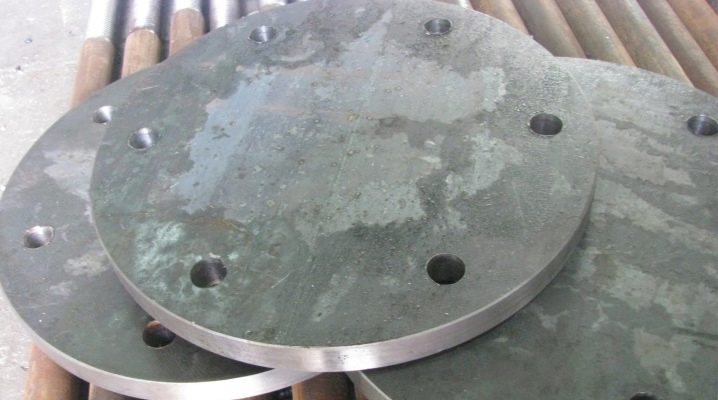
A flange plug is a special small-sized piece that serves to temporarily or permanently shut off the working flow through the pipe. And also the element is used as a sealant. The base of the plug is a disk, around the circumference of which there are holes for mounting.
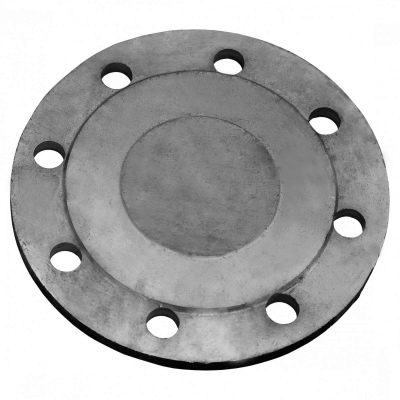
Specifications
Flange plugs are in demand in many industries:
-
industrial;
-
oil and gas;
-
chemical.
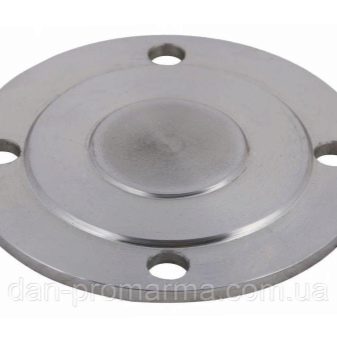
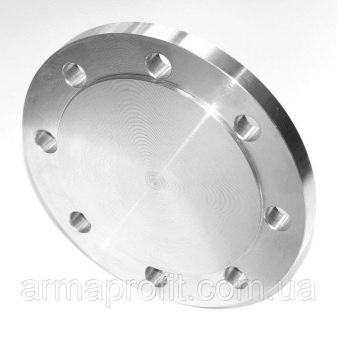
And also the parts are actively used in the housing and communal sector, where they can be used to extend the service life of pipes in houses and prevent emergencies. Installation of flange plugs makes it possible to easily carry out repair or preventive measures to restore the functionality of the pipeline.
The technical parameters of the plugs must completely match the mating flange installed at the end of the pipeline. This means that she must have the following indicators identical:
-
material;
-
temperature limit;
-
pressure range.

This approach avoids welding to secure the plug to an already installed flange. The installation of the part is carried out using bolts and pins, which ensure reliable fixation of the element in the required position.
Key properties of stubs, regardless of their type:
-
high reliability rate;
-
tight connection;
-
safety and ease of installation;
-
ease of use;
-
availability;
-
long service life.
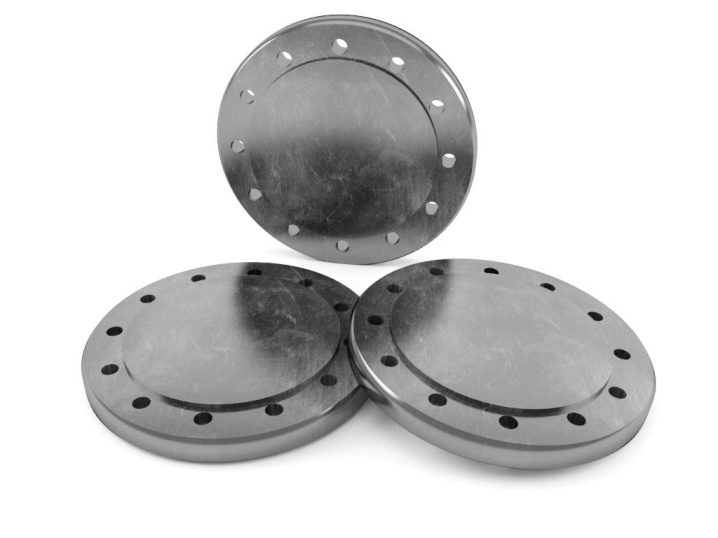
The parameters of the flange plugs are regulated by the requirements of GOST.
Manufacturing materials
For the manufacture of blind flanges, different grades of steel are used, which makes it possible to obtain parts with unequal characteristics. The choice of material for the element takes into account the area of application and the working environment of the pipeline in which the plug is planned to be installed.

Popular materials for the manufacture of parts of this type.
-
Art 20. It is a structural steel with an average percentage of carbon.
-
St 08G2S. High strength structural low alloy steel.
-
12X18H10T. Structural type cryogenic steel.
-
10Х17Н13М2Т. Steel with increased corrosion resistance.
-
15X5M. Alloyed stainless steel for high temperature service.
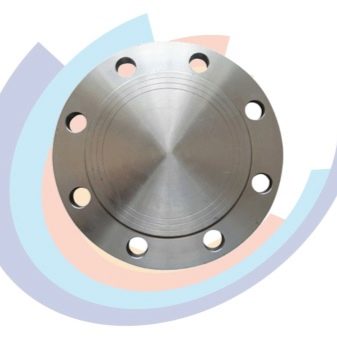
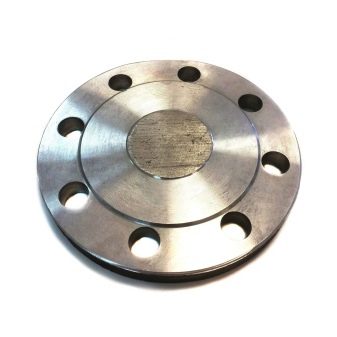
And also manufacturers produce cast iron and plastic plugs based on the conditions of the project. The characteristics of materials are regulated by GOSTs. There are two ways to manufacture flange plugs.
-
Hot or cold stamping... The most common production method that allows you to obtain high quality workpieces. The technique makes it possible to manufacture elements of various shapes and sizes, which, if necessary, can be processed: subjected to plasma or gas cutting. An additional advantage of the technique is the minimization of the risk of voids and shrinkage cavities, which avoids rejects. The plugs produced by the stamping method are distinguished by increased strength characteristics, long service life, and provide excellent tightness of the connection.
-
TSESHL... It is a production technique by centrifugal electroshock casting. With its help, it is possible to produce a high quality product, the only drawback is the heterogeneity of the chemical structure, as well as the risks of the formation of pores and air pockets.


Flange plugs are manufactured taking into account the requirements of regulatory documents: GOST and ATK. In accordance with the type of execution, the diameter of the passage and the conditional division of the steel grade, the part receives a certain marking.

Marking and dimensions
After production, the part undergoes a thorough quality control, which includes:
-
measurements of geometric dimensions;
-
analysis of the chemical composition and mechanical characteristics of the used metal;
-
study of the micro- and macrostructure of the element.

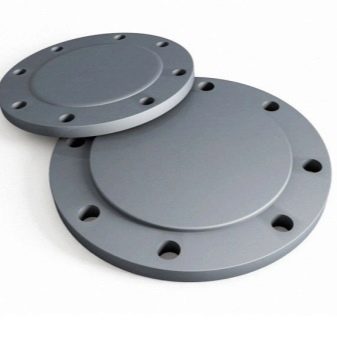
If all the characteristics obtained meet the requirements of GOST, the product is certified and receives a certificate.
Standard dimensions of flange plugs are regulated by the standard designs album - ATK 24.200.02-90. When carrying out measurements, the following parameters are taken into account:
-
ДУ - conditional passage;
-
D - outer diameter;
-
D1 - the diameter of the hole in the plug;
-
D2 - diameter of the protrusion;
-
d2 is the mirror diameter;
-
b - thickness;
-
d is the diameter of the holes for fasteners;
-
n is the number of holes for fasteners.
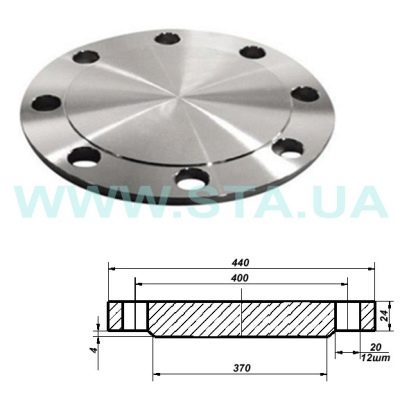
It is easy to determine the nominal bore diameter of the plugs with the designation DN150, DN50, DN100, DN200, DN32, DN400 and other details. The parameters are measured in millimeters. For example, the diameter of a part with the brand DN80 is 80 mm, DN500 - 500 mm.
Flat disc standard features:
-
nominal bore - from 10 to 1200 mm;
-
the outer diameter of the plug is from 75 to 1400 mm;
-
plug thickness - from 12 to 40 mm.
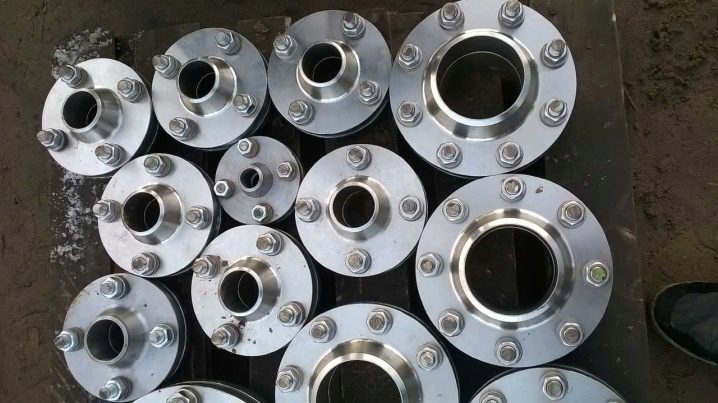
The final marking of the part takes into account the type, nominal diameter, pressure and steel from which the element is made.... For example, a plug of the first type with a diameter of 100 mm, a pressure of 600 kPa, made of steel 16GS will be marked: 1-100-600-16GS. Some factories produce special parts with a handle, displaying this in the marking.
What is the difference from a rotary?
To understand what is the difference between the elements, you need to consider each of them in more detail. It's worth starting with the flange plug. As noted, this is a special part for use in pipelines to restrict the flow of a liquid or gas. The plug in its execution completely repeats the shape of the steel flange, copying:
-
element execution;
-
type of sealing surface;
-
sizes.
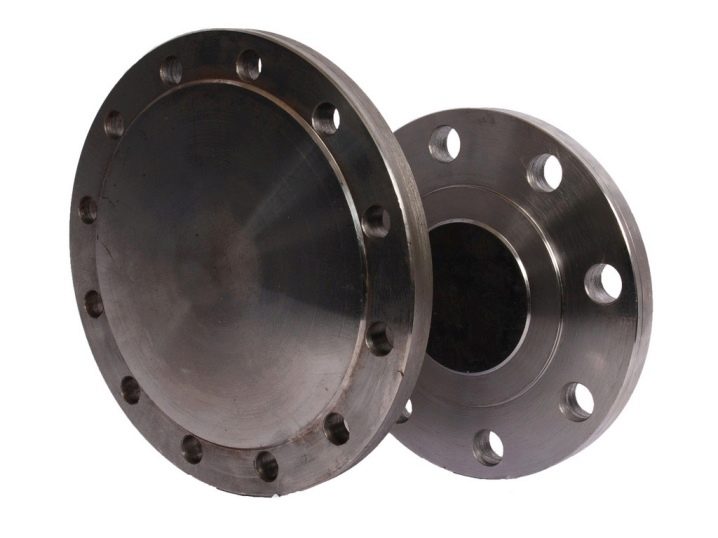
The only difference from the flange is that there is no through hole.
With the help of a flange part, it is possible to temporarily or permanently shut down the pipe section. Parts are in demand in many areas due to their properties and performance characteristics.

The principle of operation of the plug is simple.
-
A steel disc is applied to the flange.
-
A gasket is installed between the two elements.
-
Parts are pulled together with bolts or studs around the circumference.
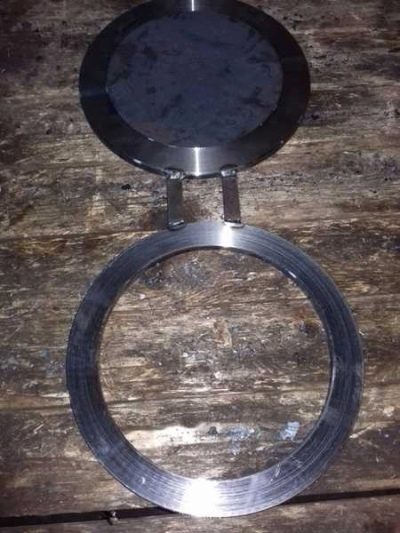
Gaskets for the organization of a sealed connection are made of metal or other materials. The presence of such a product prevents friction between the elements and improves clamping.
Now it's worth figuring out what a swivel plug is, which is also called pipe parts... This is a special design that includes two steel discs. One is absolutely blind, the other is equipped with a central hole, both discs are connected by a bridge. If we consider the appearance of the part, then it has the shape of an eight or glasses, so you can often hear the third name of the plug - Schmidt glasses.
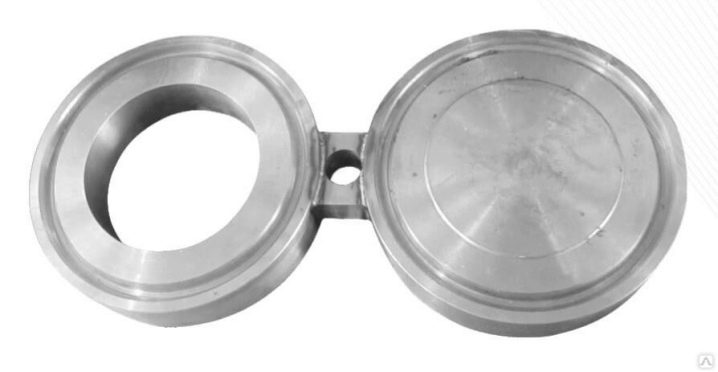
Swivel plugs are in demand in the oil and gas and industrial sectors. Parts are mounted on the ends of pipelines for the purpose of carrying out repair or maintenance work. The installation of the part is carried out in an already prepared flange connection. The principle of operation of the plug is simple.
-
The blind side blocks the flow.
-
The orifice disc resumes the movement of liquid or gas.
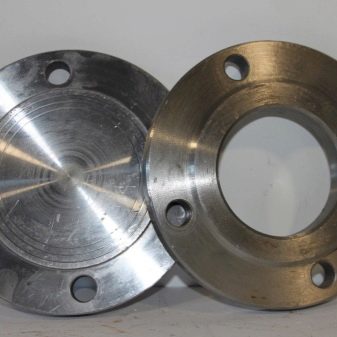

Peculiarity parts in the possibility of their use in aggressive environments where there is a high risk of corrosion, metal cracking.
Flange plugs are in demand in pipelines with a working medium temperature from -70 to +600 degrees Celsius.The part is used as part of a flange joint, which is why it bears that name.
Swivel plugs are applicable in areas where periodic shut-off of the flow of liquid or gas is required at the time of repair or maintenance work.
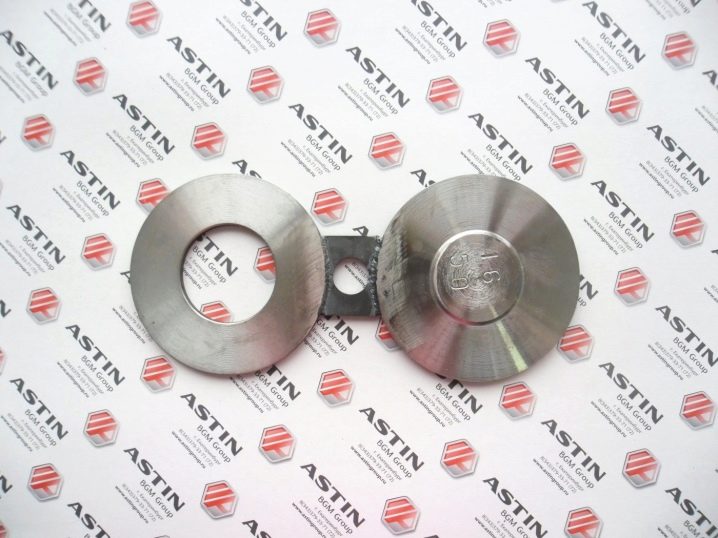
Swivel plugs are available in three types. The first one provides a connecting protrusion, the second is equipped with a conventional protrusion, the third option goes under an oval-shaped gasket. Some manufacturing plants make spike or hollow plugs.
Rotary valves, like the flange plug, are installed on pipelines in order to stop the working medium. However, there is a difference between the details.














The comment was sent successfully.